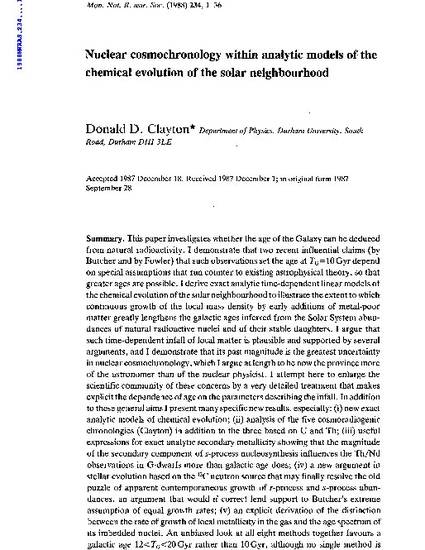
This paper investigates whether the age of the Galaxy can be deduced from natural radioactivity. I demonstrate that two recent influential claims (by Butcher and by Fowler) that such observations set the age at TG = 10 Gyr depend on special assumptions that run counter to existing astrophysical theory, so that greater ages are possible. I derive exact analytic time-dependent linear models of the chemical evolution of the solar neighbourhood to illustrate the extent to which continuous growth of the local mass density by eaily additions of metal-poor matter greatly lengthens the galactic ages inferred from the Solar System abundances of natural radioactive nuclei and of their stable daughters. I argue that such time-dependent infall of local matter is plausible and supported by several arguments, and I demonstrate that its past magnitude is the greatest uncertainty in nuclear cosmochronology, which I argue at length to be now the province more of the astronomer than of the nuclear physicist. I attempt here to enlarge the scientific community of these concerns by a very detailed treatment that makes explicit the dependence of age on the parameters describing the infall. In addition to these general aims I present many specific new results, especially: (i) new exact analytic models of chemical evolution; (ii) analysis of the five cosmoradiogenic chronologies (Clayton) in addition to the three based on U and Th; (iii) useful expressions for exact analytic secondary metallicity showing that the magnitude of the secondary component of s-process nucleosynthesis influences the Th/Nd observations in G-dwarfs more than galactic age does; (iv) a new argument in stellar evolution based on the 13C neutron source that may finally resolve the old puzzle of apparent contemporaneous growth of r-process and s-proccss abundances, an argument that would if correct lend support to Butcher's extreme assumption of equal growth rates; (v) an explicit derivation of the distinction between the rate of growth of local metallicity in the gas and the age spectrum of its imbedded nuclei. An unbiased look at all eight methods together favours a galactic age 12
